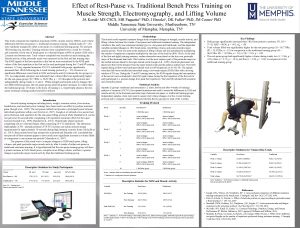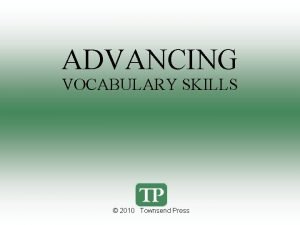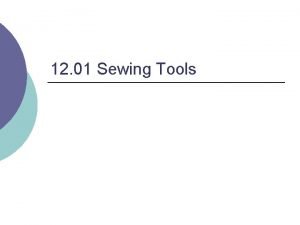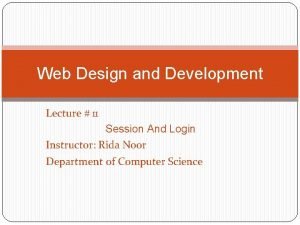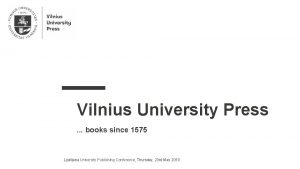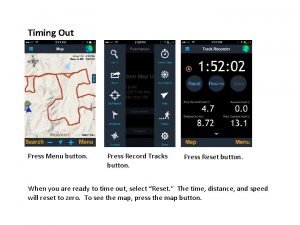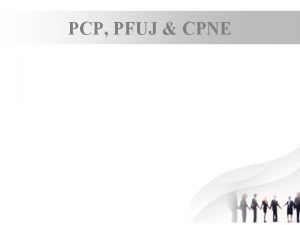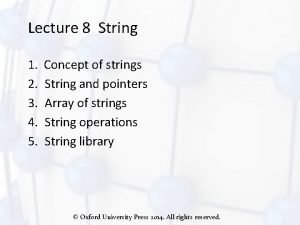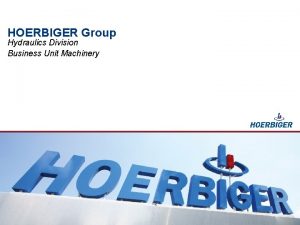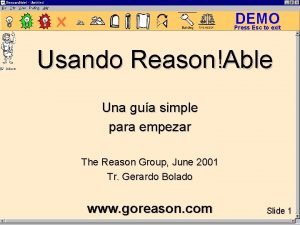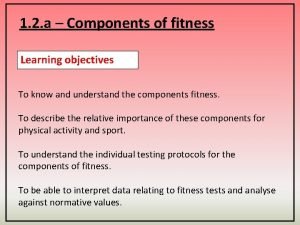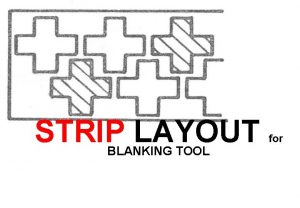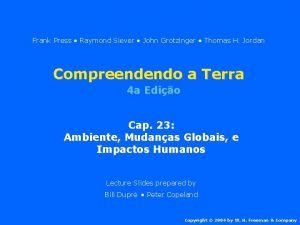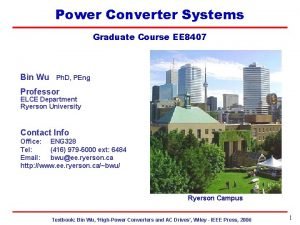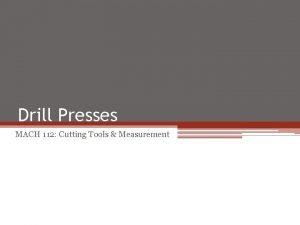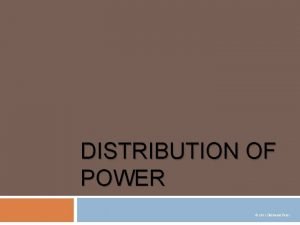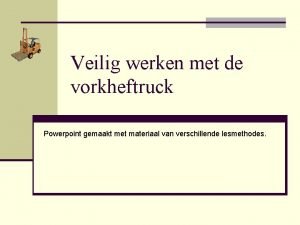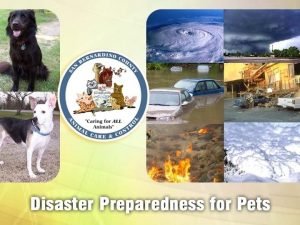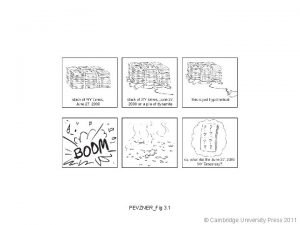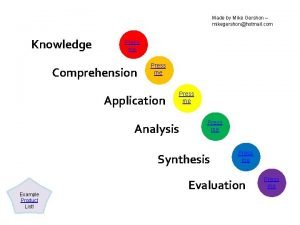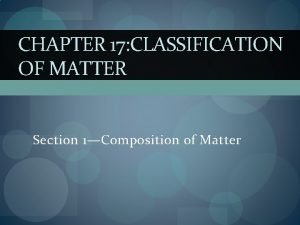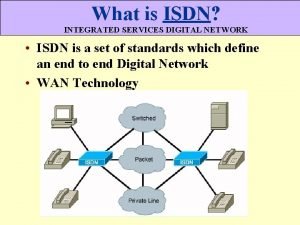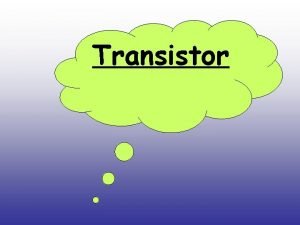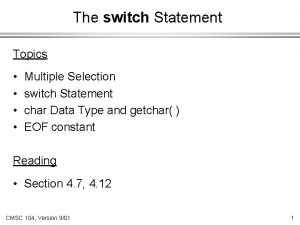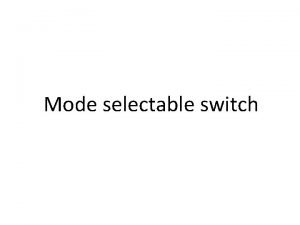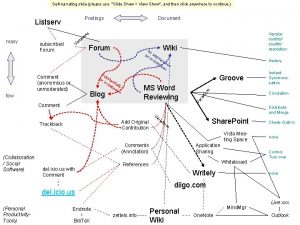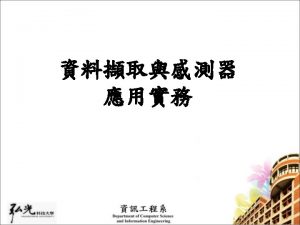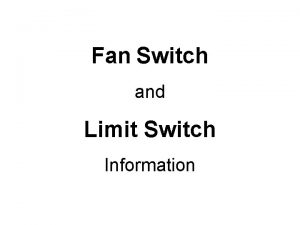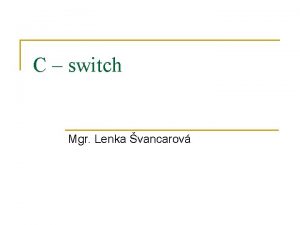Please switch to slide show mode press F



















































































































































- Slides: 147

Please switch to ‘slide show’ mode (press F 5)

This is a presentation by Roderick Hunt, Ric Colasanti & Andrew Askew University of Sheffield It is all about SAM A model involving self-assembling modular plants

This is what a community of virtual plants looks like Contrasting tones show patches of resource

This is a single propagule of a virtual plant It is about to grow in a resource-rich above- and below-ground environment



















The plant has produced abundant growth aboveand below-ground and zones of resource depletion have appeared

Above-ground binary tree ( = shoot system) Each plant is structured like this A branching module Above-ground array Above-ground binary tree base module Below-ground array Below-ground binary tree base module This is only a diagram, not a painting ! An end module Below-ground binary tree ( = root system)

The end-modules capture resources: Light and carbon dioxide from aboveground Water and nutrients from belowground The branching (parent) modules can pass resources to any adjoining modules In this way whole plants can grow

The virtual plants interact with their environment (and with their neighbours) just like real ones do They possess most of the properties of real individuals and populations For example …

S-shaped growth curves

Partitioning towards the resourcepoorer half of the environment

Maintaining a functional equilibrium above-and belowground

Foraging towards resources in a heterogeneous environment

And when many plants are grown together in a dense population …

… they exhibit selfthinning but as the plants are 2 -dimensional the thinning slope is not – 3/2

All of these plants have the same specification (modular rulebase) But this specification can easily be changed if we want the plants to behave differently…

For example, we can recreate J P Grime’s system of C-S-R plant functional types For this, the specifications we need to change are those controlling morphology, physiology and reproductive behaviour …


With three levels possible in each of three traits, 27 simple functional types could be constructed However, we model only 7 types; the other 20 include Darwinian Demons that do not respect evolutionary tradeoffs

Let us see some competition between different types of plant Initially we will use only two types …

Small size, rapid growth and fast reproduction Medium size, moderately fast in growth and reproduction








(Red enters its 2 nd generation)











White has won !

Now let us see if white always wins This time, its competitor is rather different …

Medium size, moderately fast in growth and reproduction Large size, very fast growing, slow reproductio n























The huge blue type has outcompeted both of the white plants, both above- and belowground And the simulation has run out of space …


So competition can be demonstrated realistically … … but most real communities involve more than two types of plant

We need seven functional types to cover the entire range of variation shown by herbaceous plant life To a first approximation, these seven types can simulate complex community processes very realistically

For example, an equal mixture of all seven types can be grown together … … in an environment which has high levels of resource, both above- and below-ground





















The blue type has eliminated almost everything except white and green types And the simulation has almost run out of space again …


Now we grow the equal mixture of all seven types again … … but this time the environment has low levels of mineral nutrient resource, as indicated by the many grey cells













(a gap has appeared here)


(red tries to colonize)





(but is unsuccessful)



White, green and yellow finally predominate … … blue is nowhere to be seen … … and total biomass is much reduced


Environmental gradients can be simulated by increasing resource levels in steps Whittaker-type niches then appear for contrasting plant types within these gradients

(types)

Next we grow the equal mixture of all seven types again … … but this time under an environmental gradient of increasing mineral nutrient resource

Greatest biodiversity is at intermediate stress

Now, environmental disturbance can be defined as ‘removal of biomass after it has been created’ For example, grazing, cutting, burning and trampling are all forms of disturbance

In our model, ‘trampling’ can be applied simply by removing shoot material from certain sizes of patch at certain intervals of time and in a certain number of places Other forms of disturbance can be simulated by varying each of these factors

So we grow the equal mixture of all seven types again … … but this time under an environmental gradient of increasing ‘trampling’ disturbance

Greatest biodiversity is at intermediate disturbance … … but the final number of types is low

Environmental stress and disturbance can, of course, be applied together This can be done in all forms and combinations

Again we grow the equal mixture of all seven types … … but with one of seven levels of stress and seven levels of disturbance in all factorial combinations

Greatest biodiversity is at intermediate productivity

The biomass-driven humpbacked relationship is one of the highestlevel properties that real plant communities possess Yet it emerges from the model solely because of the resource-capturing activity of modules in the selfassembling plants


 A-mode ultrasound image
A-mode ultrasound image What is heel and toe polka
What is heel and toe polka Press mode
Press mode The resources need to be reserved during the setup phase in
The resources need to be reserved during the setup phase in Go switch 70 series
Go switch 70 series Please switch off the phone
Please switch off the phone Will you please be quiet please themes
Will you please be quiet please themes Buck converter output voltage
Buck converter output voltage Buck switch mode power supply
Buck switch mode power supply Switch mode power supply lecture notes
Switch mode power supply lecture notes Saklar tpst
Saklar tpst Focus mode and diffuse mode
Focus mode and diffuse mode Mode địa chỉ tức thì là mode
Mode địa chỉ tức thì là mode Real protected and virtual modes of 80386
Real protected and virtual modes of 80386 8051 timers
8051 timers Gartner mode 1 mode 2
Gartner mode 1 mode 2 Perbedaan (planning mode) dan (evolutionary mode)
Perbedaan (planning mode) dan (evolutionary mode) 8088 vs 8086
8088 vs 8086 Slide todoc.com
Slide todoc.com Powerpoint sekolah sabat
Powerpoint sekolah sabat Naruto slidshow
Naruto slidshow During a slide show luis wants a picture to appear
During a slide show luis wants a picture to appear Factor
Factor Wmpress
Wmpress Lost wax pattern technique
Lost wax pattern technique Thermal press hair
Thermal press hair Penny press newspaper
Penny press newspaper The committee debate these questions carefully
The committee debate these questions carefully Sms extrusion press
Sms extrusion press Smart bench press
Smart bench press Drill press safety poster
Drill press safety poster Rundown press conference
Rundown press conference Press tool design
Press tool design Ravne press
Ravne press Pine forge press
Pine forge press Riksarkivet personsök
Riksarkivet personsök Pengertian siaran pers
Pengertian siaran pers Press release piramida terbalik
Press release piramida terbalik Phk buku ub press
Phk buku ub press Oxford university press south africa
Oxford university press south africa Theories of the press
Theories of the press Normative theory of communication
Normative theory of communication Normative society
Normative society Similar images
Similar images Alo press
Alo press Hp indigo 3550 digital press
Hp indigo 3550 digital press Press release subhead
Press release subhead Oxford university press 2015 answers
Oxford university press 2015 answers Health administration press
Health administration press Olive press gethsemane
Olive press gethsemane Clairmont press
Clairmont press Function of the press
Function of the press Freedom of press definition
Freedom of press definition Yuo have hit the spacebar
Yuo have hit the spacebar Cold isostatic press
Cold isostatic press Chapter 19 section 3 freedom of speech and press
Chapter 19 section 3 freedom of speech and press Tips zaalhockey
Tips zaalhockey Whats a press conference
Whats a press conference Diamond press break
Diamond press break Ios press
Ios press Solemar commercial press
Solemar commercial press Lancing operation in sheet metal
Lancing operation in sheet metal Personologi adalah
Personologi adalah Contoh backgrounders
Contoh backgrounders Intro
Intro Press on to maturity
Press on to maturity Press esc to exit
Press esc to exit Grunig's four models of public relations
Grunig's four models of public relations Role of news media
Role of news media Zaalhockey press
Zaalhockey press Szkło emaliowane press glass
Szkło emaliowane press glass How has the printing press impacted society
How has the printing press impacted society Shear press kinematic diagram
Shear press kinematic diagram Chapter 19 section 3 freedom of speech and press
Chapter 19 section 3 freedom of speech and press Cambridge university press 2011
Cambridge university press 2011 Press breakers
Press breakers Henry viii definition ap world history
Henry viii definition ap world history Daniel skornjakov
Daniel skornjakov M.swan (oxford university press)
M.swan (oxford university press) Steps to writing a press release
Steps to writing a press release Types of dies
Types of dies Press return to continue
Press return to continue Tat merupakan tes suplemen bagi tes
Tat merupakan tes suplemen bagi tes Person-environment fit theory of aging
Person-environment fit theory of aging Perhitungan screw press
Perhitungan screw press Asscoiated
Asscoiated![[hydraulic press mesh curtain] [hydraulic press mesh curtain]](data:image/svg+xml,%3Csvg%20xmlns=%22http://www.w3.org/2000/svg%22%20viewBox=%220%200%20200%20200%22%3E%3C/svg%3E) [hydraulic press mesh curtain]
[hydraulic press mesh curtain] Rate of filtration equation
Rate of filtration equation Rest pause bench press
Rest pause bench press Sludge press
Sludge press Pillar drill safety poster
Pillar drill safety poster Half press is available only on
Half press is available only on Townsend press vocabulary
Townsend press vocabulary Waxy coated paper which transfers pattern markings
Waxy coated paper which transfers pattern markings Press: television: radio: ?
Press: television: radio: ? Press database
Press database Vilnius university press
Vilnius university press Pillar drill bit
Pillar drill bit Press menu button
Press menu button Post event press release
Post event press release Forgetting those things which are behind nkjv
Forgetting those things which are behind nkjv Press council of pakistan
Press council of pakistan Paradigm press inc
Paradigm press inc Muscular strength fitness test
Muscular strength fitness test Strlen(“oxford university press”) is
Strlen(“oxford university press”) is Introduction to poetry analysis
Introduction to poetry analysis Manpower department malaysia
Manpower department malaysia Press brake hydraulic diagram
Press brake hydraulic diagram Simple claustral complex
Simple claustral complex Pressing process in garment industry
Pressing process in garment industry Tire retreading machinery
Tire retreading machinery Richard rhorer
Richard rhorer Press esc to exit
Press esc to exit Press database
Press database Press fleet management
Press fleet management Four types of clipping
Four types of clipping Trust in written press
Trust in written press Ruler drop test physical fitness components
Ruler drop test physical fitness components Igbt press pack
Igbt press pack Ripple mill palm oil mill
Ripple mill palm oil mill Triangle of auscultation diagram
Triangle of auscultation diagram Strip layout types
Strip layout types Trumpf punch press
Trumpf punch press Oxford university press
Oxford university press Contoh press agentry model
Contoh press agentry model Atmosfera terrestre
Atmosfera terrestre Press and siever
Press and siever Press pack igbt
Press pack igbt Drill press vise definition
Drill press vise definition Clairmont press
Clairmont press Montage volrubberbanden
Montage volrubberbanden Townsend press chapter 4 implied main ideas
Townsend press chapter 4 implied main ideas Oxford university press
Oxford university press Press enterprise pets
Press enterprise pets Cambridge university press 2011
Cambridge university press 2011 [email protected]
[email protected] Independent press standards organisation
Independent press standards organisation To start a new line in a cell press the ____ keys
To start a new line in a cell press the ____ keys Goss urbanite press
Goss urbanite press El filibusterismo aug 1891
El filibusterismo aug 1891 To create purchase order press
To create purchase order press What is a heterogeneous mixture that never settles
What is a heterogeneous mixture that never settles Message waiting indicator
Message waiting indicator A digital network
A digital network Regulator bypass switch
Regulator bypass switch Difference between datagram and virtual circuit switching
Difference between datagram and virtual circuit switching How pnp transistor works as a switch
How pnp transistor works as a switch Multiple selection statement
Multiple selection statement
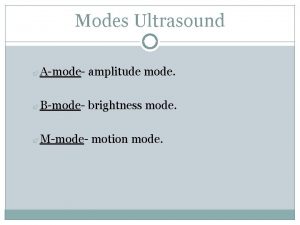



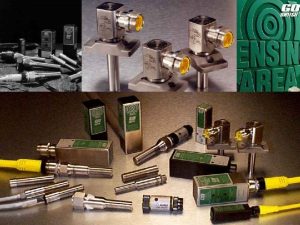


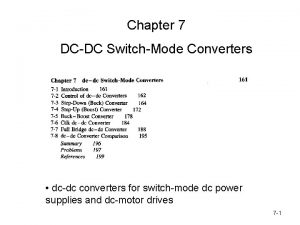
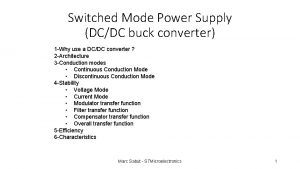

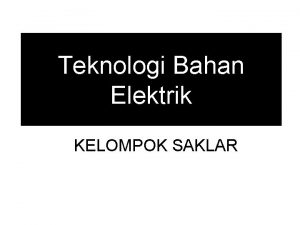




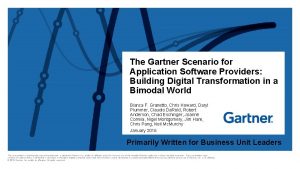
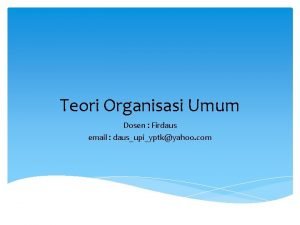







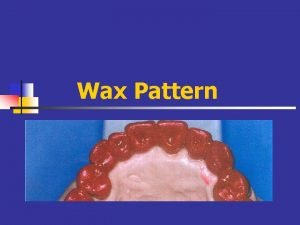





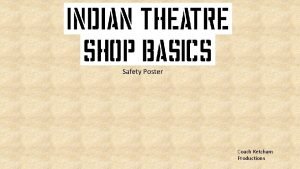


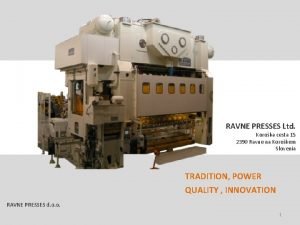
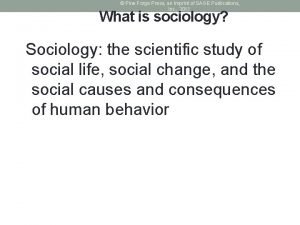
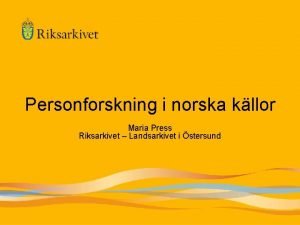
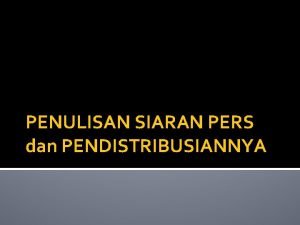

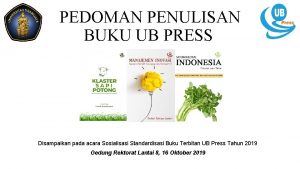
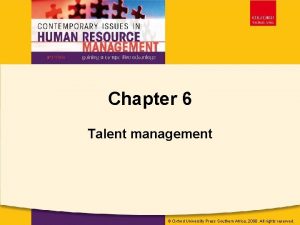
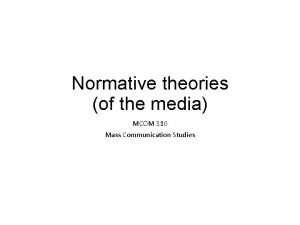
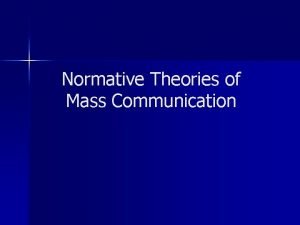

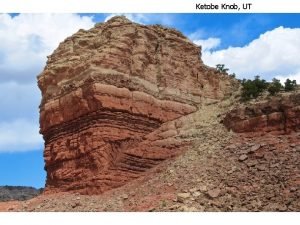
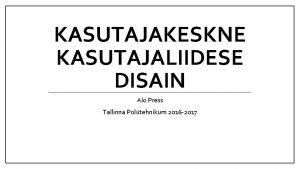



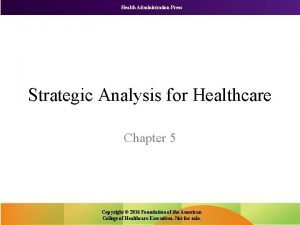
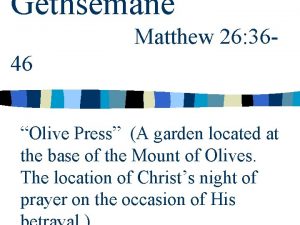
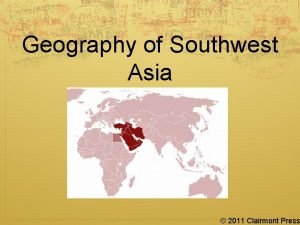
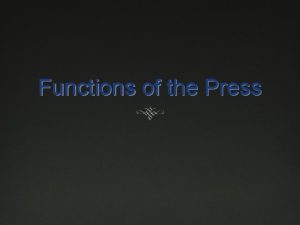


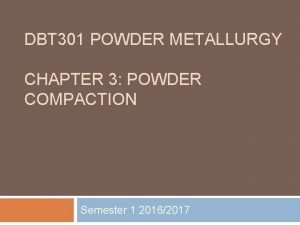



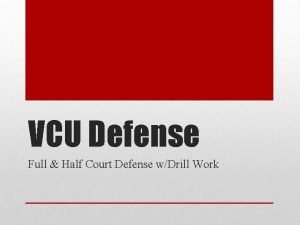

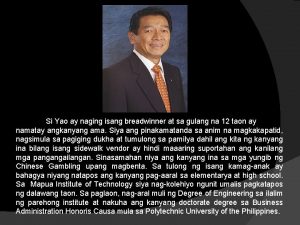
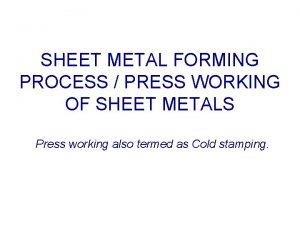
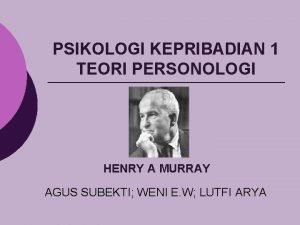




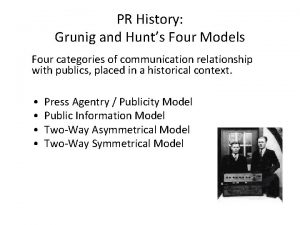



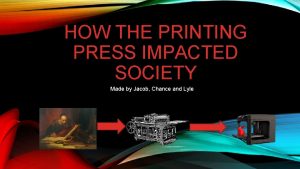
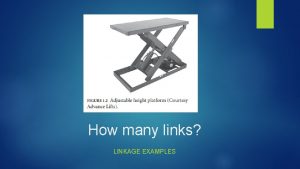
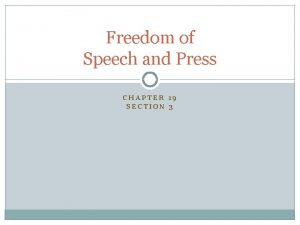
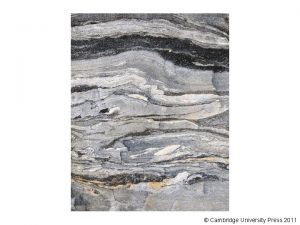


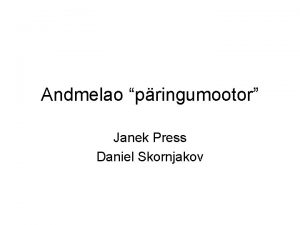


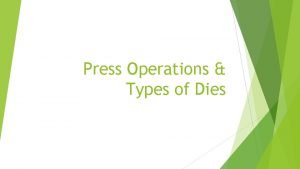


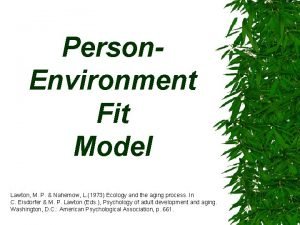
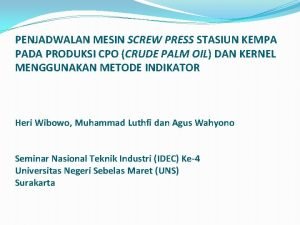

![[hydraulic press mesh curtain] [hydraulic press mesh curtain]](https://slidetodoc.com/wp-content/uploads/2020/09/631491_97883c2217697d92e178631085351e39-300x225.jpg)

